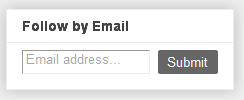If you already have a video on your computer, you can upload it to your blog as follows:

Videos uploaded through Blogger are hosted on Google Video.
Are my videos indexed or searchable?
No, your videos are kept private and will not be included in Google Video search.
How long does it take to upload and process a video?
Uploading a video may take a while, since videos tend to be very large files. However, the exact amount of time required will depend on the size of your specific video and the speed of your internet connection. The processing stage usually takes about five minutes. Blogger will display a status message below the post editor to let you know how this is going, and there will be a placeholder icon in your post to show where the video will appear.
- Click the film strip icon on the post editor toolbar.
- In the popup window, click "Browse" to find the video on your computer.
- Enter a title for your video.
- Agree to the Terms and Conditions (if this is your first video upload).
- Click "Upload Video."
Frequently Asked Questions
Where are my videos hosted?Videos uploaded through Blogger are hosted on Google Video.
Are my videos indexed or searchable?
No, your videos are kept private and will not be included in Google Video search.
How long does it take to upload and process a video?
Uploading a video may take a while, since videos tend to be very large files. However, the exact amount of time required will depend on the size of your specific video and the speed of your internet connection. The processing stage usually takes about five minutes. Blogger will display a status message below the post editor to let you know how this is going, and there will be a placeholder icon in your post to show where the video will appear.
 same time coz Google or like practically any other website out there, doesn’t provide for this feature. Sometime it can be a headache to manage the different accounts. But now looks like that Google is working on a new feature which will enable users to be logged into several accounts at a time in the same browser.
same time coz Google or like practically any other website out there, doesn’t provide for this feature. Sometime it can be a headache to manage the different accounts. But now looks like that Google is working on a new feature which will enable users to be logged into several accounts at a time in the same browser.


















